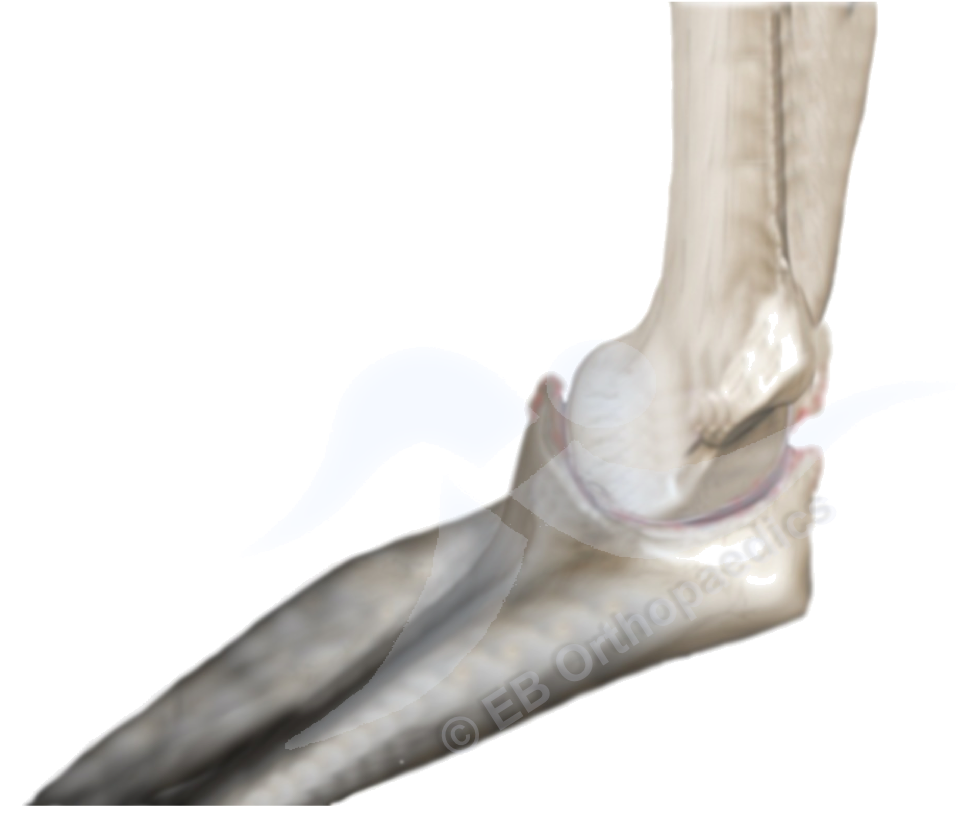Elbow arthritis

Elbow arthritis is arthritis affecting the elbow joint, which can be the ulnohumeral (main hinge joint in the elbow), and / or the radiocapitellar joint (the joint contributing to rotation of the forearm).
While there are many types of arthritis, the commonest are osteoarthritis (‘wear and tear’) that becomes more common with increasing age, and post-traumatic arthritis (arthritis that follows a previous injury to the elbow). Other types of arthritis may occur as part of a body-wide condition such as rheumatoid arthritis.
Arthritis is a process whereby the cartilage carpet in the joint is lost, resulting in bone rubbing directly on bone. This stimulates the body to produce more bone (osteophytes) which can stiffen the joint or cause catching and locking of the joint if small parts of the bone break off and float around the joint.
The main symptoms are pain and stiffness of the elbow. The pain tends to be a constant ache and may be worse in cold weather. Some people also report locking of the elbow where it gets stuck in a certain position, or catching in the elbow with sudden sharp pain which subsequently settles. In terms of stiffness, this is often worst first thing in the morning and eases through the day.
While non-surgical treatments do not affect the underling arthritis, they can control the symptoms from it. In the early stages, simply adjusting what you do and how you do it may be sufficient. Regular painkillers may be enough to keep the pain under control and enable regular activities to be performed.
You may find a steroid injection helpful. This may be given if there is uncertainty as to how much of your symptoms are coming from the elbow joint and how much from elsewhere. Injections can provide relief lasting months or longer but the duration of pain relief tends to vary and is often unpredictable.
Arthroscopic debridement surgery may be helpful to allow assessment of the joint surfaces, smooth any rough parts, and to remove any loose bodies (fragments of bone and soft tissue) that may be floating around the joint.
If the main problem is with the radiocapitellar joint, then addressing this by replacing the radial head or removing it entirely may provide more movement and an improvement in pain.
Elbow replacement surgery is often the most reliable means of pain relief however it is not suitable for everyone, particularly those who are young or who want to place high demands on their elbow. Typically after elbow replacement surgery you are restricted to lifting only 1 or 2 kilograms as it can cause excessive wear and failure.
The specific physiotherapy and rehabilitation you will undergo following your surgery will depend on the specific surgery. Often no formal physiotherapy is required and indeed movements which are too aggressive can be counter-productive.
This depends on the aims of the surgery. If the aim is too improve your movement then this is usually achieved. If the aim is to improve the pain in the elbow, replacement usually provides a reliable means of achieving this.